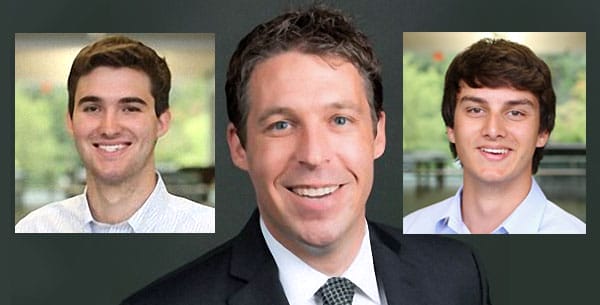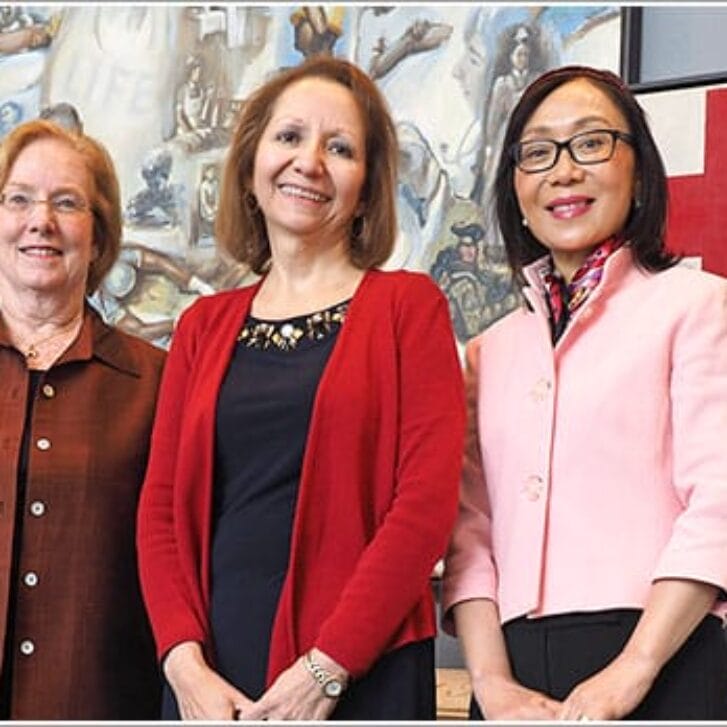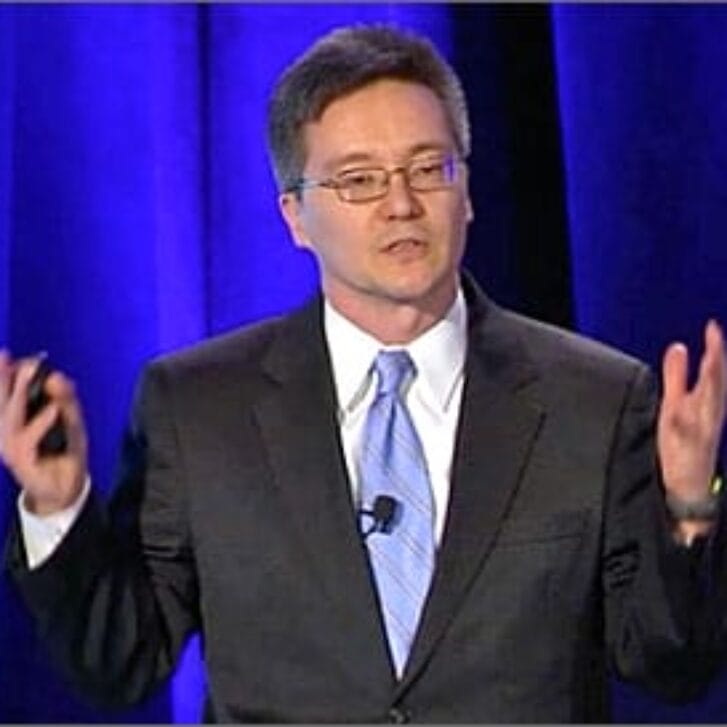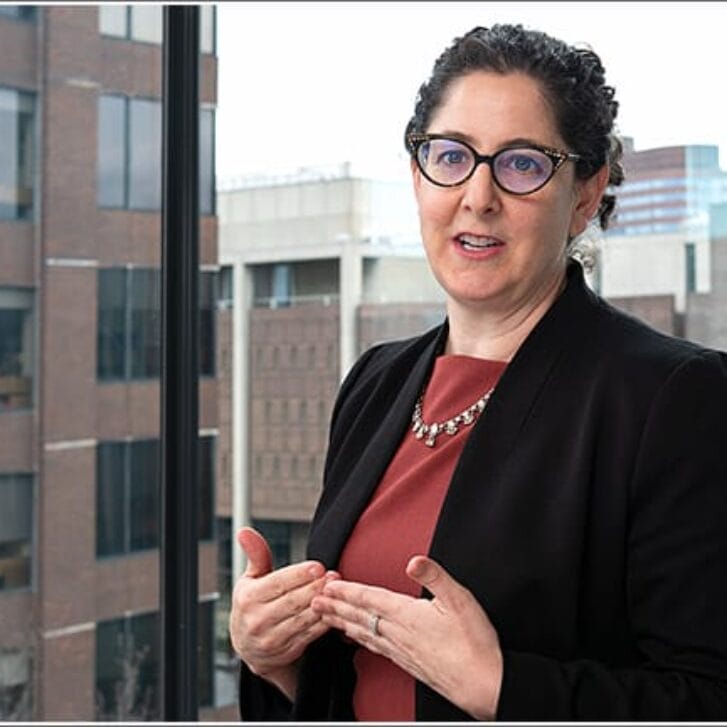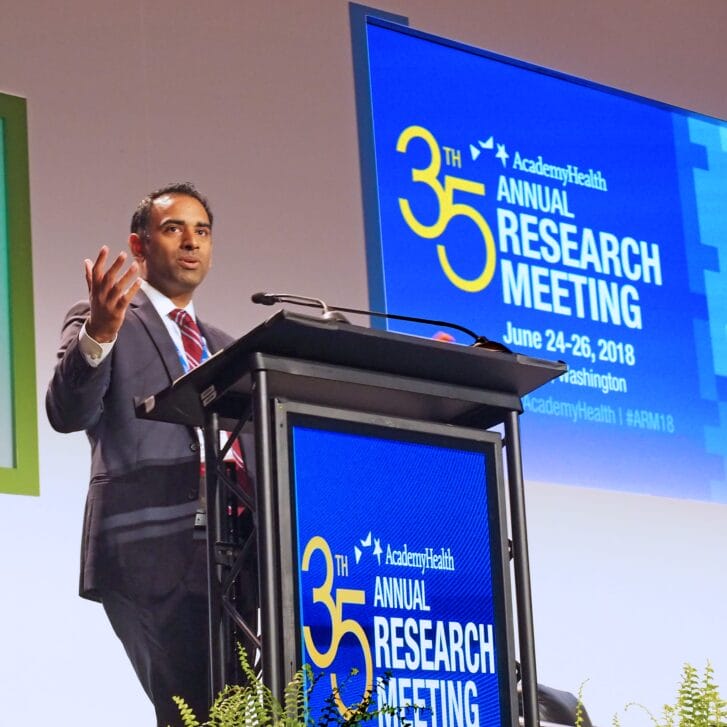It’s almost the stuff movies are made of. A young professor charged with teaching a new university course in health care entrepreneurship meets a brash sophomore interested in taking the class. But then, quixotically, the undergrad decides to skip the course and asks the professor to mentor him and his fellow sophomore business partner as they figure out the complexities of entrepreneurial practice on their own.
Three years later, the two students win the University’s highest award for inventiveness and marketing savvy. And to complete the circle, the two are invited back to their mentor’s classroom to lecture his pupils on entrepreneurial chutzpah.
$200,000 prize
Those two students are Aaron Goldstein of the University of Pennsylvania’s Wharton School and William Duckworth of Penn’s School of Engineering who have just been named winners of one of two innovation prizes announced by University of Pennsylvania President, Amy Gutmann. The honor includes $100,000 for business expenses and $50,000 each for living expenses over the next year as they continue to develop their product, Fever Smart. Fever Smart is tiny smart patch thermometer system that monitors body temperature and continuously transmits real-time data into the cloud where it can be accessed anywhere by smartphone.
Their mentor during the last three years—who will continue to work with them as they take up residence in Penn’s new Pennovation Center—is Matthew Grennan, PhD. He’s a Wharton School Assistant Professor of Health Care Management and a Senior Fellow at Penn’s Leonard Davis Institute of Health Economics (LDI) who teaches Wharton’s three-year-old undergrad Health Care Entrepreneurship course (HCMG391).
‘An amazing resource’
“We would not be in the position we are today without Matt Grennan’s guidance and advice,” said 21-year-old Goldstein, a senior who is CEO of Fever Smart. “He’s been an amazing resource for us in ways that really made a difference.”
Grennan, whose own academic research focuses on competitive strategy, industrial organization economics, and innovation in the health care industry, isn’t new to mentoring but considers Goldstein and Duckworth to be the most interesting mentees he’s ever connected with.
“They impressed me from the start because every time we would meet, they had done more than I would have expected them to accomplish,” he said. “In the first six months they developed a prototype of the product, found a vendor that could manufacture it in China, launched an Indiegogo crowdfunding campaign and were testing the market across the country with a pre-orders pitch.”
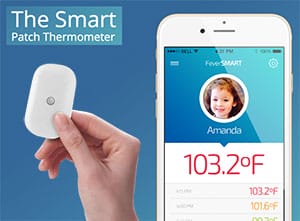 Febrile seizures
Febrile seizures
The original idea for Fever Smart was focused on children who had febrile seizures. The National Institute of Neurological Disorders and Stroke estimates this condition affects from 2 to 5 percent of U.S. children before age 5. The onset of the seizures is both predicted and ultimately caused by a rapid spike in body temperature.
“If you see the temperature suddenly rising, you can often take some kind of action to prevent the seizure,” Grennan explained. “This was an obvious group that could really use an innovation like this. When I first heard the idea from Aaron, I could clearly see its potential.”
Fever Smart consists of tiny temperature sensing device in a thin patch that can be stuck in a child’s armpit. Fully integrated into Apple’s Healthkit App, the sensor continuously transmits data via Bluetooth to a nearby iPhone or iPad. That Apple device then pushes the data into the cloud where it can be accessed on a computer or smartphone from anywhere. The system can also send an instant alert when a fever starts to rise.
The original marketing target for the product was later expanded beyond febrile seizures to general use by parents who had reason to be concerned about a child’s fever. In the last year, Grennan has helped Goldstein and Duckworth think through further expansion and the potential of sales to large health care delivery systems.
Post-op monitoring clinical trial
As part of the company’s new push toward the business-to-business medical device market, Fever Smart is currently being used in a clinical trial for post-surgical temperature monitoring both inside and outside a hospital system. “One of the things you worry about after an operation,” Grennan said, “is the risk of infection — and temperature is the number one sign of that.”
“One of the most difficult things for us during all of this,” said Goldstein, “was the fragmented complexity of the health care system itself. But Matt has a mastery of its various parts because his own research work is so interdisciplinary and he has helped us navigate in ways that we couldn’t otherwise have done.”
Grennan also pointed beyond himself to the often non-obvious but crucially important interdisciplinary nature of the Penn health services research community. “The ability to cross pollinate a student product development project with insights from many different areas of scientific expertise innately creates an environment that more effectively supports entrepreneurial ventures,” he said.
“In the last few years here at Penn,” Grennan continued, “I’ve seen a real increase in the number of undergraduate students who realize that at 19 or 20 years old you’re perfectly capable of taking an idea and making it into a successful product that has an impact on the world.”
Goldstein was asked what advice he could offer fellow students interested in that goal.
Advice for other students
“The most important thing is to do as much research as possible on every aspect of your idea,” Goldstein said. “Have you researched the market? Do you understand the competition? Do you know enough about the engineering issues to determine if it’s even feasible to build the thing you envision? Have you found the right mentor who can connect you to other resources across Penn?”
“I tell fellow students to seek out professors beyond those whose classes they take,” Goldstein continued. “They are incredible resources with in-depth knowledge of the kind you can’t easily find elsewhere. I’ve emailed multiple Penn professors over the past three years and never had any of them be too busy to meet with me. You’re only here on campus for four years and faculty members know way more than you do. Make the most of it.”
Editor’s note: This article was originally published on the LDI website.




















